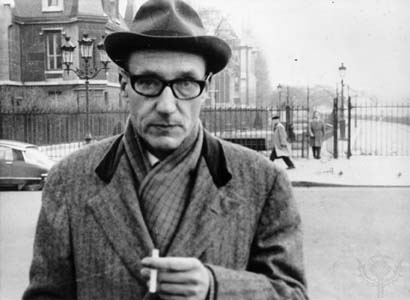“”Your mind will answer most questions if you learn to relax and wait for the answer.””
On February, 5th 1914 a person, who’s work “The Soft Machine” was an inspiration for naming our webzine, William Seward Burroughs II was born. It is not just 100 years anniversary of a birth of a person, William Seward Burroughs II is a true legend.
William Seward Burroughs II was an American novelist, short story writer, essayist, painter and spoken word performer. He is considered to be “one of the most politically trenchant, culturally influential, and innovative artists of the 20th century”. His influence is considered to have affected a range of popular culture as well as literature. Burroughs wrote 18 novels and novellas (“The Soft Machine with our character Uranian Willy is one of them), six collections of short stories and four collections of essays. Five books have been published of his interviews and correspondences. He also collaborated on projects and recordings with numerous performers and musicians, and made many appearances in films.
Burroughs’s major works can be divided into four different periods. The dates refer to the time of writing, not publication, which in some cases was not until decades later:
• Early work (early 1950s): Junkie, Queer and The Yage Letters are relatively straightforward linear narratives, written in and about Burroughs’s time in Mexico City and South America.
• The cut-up period (mid-1950s to mid-1960s): Naked Lunch is a fragmentary collection of “routines” from The Word Hoard – manuscripts written in Tangier, Paris, London, as well as of some other texts written in South America such as “The Composite City”, blending into the cut-up and fold-in fiction also heavily drawn from The Word Hoard: The Soft Machine, Nova Express, The Ticket That Exploded, also referred to as “The Nova Trilogy” or “the Nova Epic”, self-described by Burroughs as an attempt to create “a mythology for the space age”. Interzone also derives from this period.
• Experiment and subversion (mid-1960s to mid-1970s): This period saw Burroughs continue experimental writing with increased political content and branching into multimedia such as film and sound recording. The only major novel written in this period was The Wild Boys, but he also wrote dozens of published articles, short stories, scrap books and other works, several in collaboration with Brion Gysin. The major anthologies representing work from this period are The Burroughs File, The Adding Machine and Exterminator!.
• The Red Night trilogy (mid-1970s to mid-1980s): The books Cities of the Red Night, The Place of Dead Roads and The Western Lands came from Burroughs in a final, mature stage, creating a complete mythology.
Burroughs also produced numerous essays and a large body of autobiographical material, including a book with a detailed account of his own dreams (My Education: A Book of Dreams).
Burroughs is often called one of the greatest and most influential writers of the 20th century, most notably by Norman Mailer whose quote on Burroughs, “The only American novelist living today who may conceivably be possessed by genius”, appears on many Burroughs publications.
He also continues to be named as an influence by contemporary writers of fiction. Both the New Wave and, especially, the cyberpunk schools of science fiction are indebted to him. Admirers from the late 1970s—early 1980s milieu of this subgenre include William Gibson and John Shirley, to name only two. First published in 1982, the British slipstream fiction magazine Interzone (which later evolved into a more traditional science fiction magazine) paid tribute to him with its choice of name. He is also cited as a major influence by musicians Roger Waters, Patti Smith, Genesis P-Orridge, Ian Curtis, Lou Reed, Laurie Anderson, Tom Waits and Kurt Cobain.
Drugs, homosexuality and death, common among Burroughs’s themes, have been taken up by Dennis Cooper, of whom Burroughs said, “Dennis Cooper, God help him, is a born writer”. Cooper, in return, wrote, in his essay ‘King Junk’, “along with Jean Genet, John Rechy, and Ginsberg, [Burroughs] helped make homosexuality seem cool and highbrow, providing gay liberation with a delicious edge”. Splatterpunk writer Poppy Z. Brite has frequently referenced this aspect of Burroughs’s work. Burroughs’s writing continues to be referenced years after his death; for example, a November 2004 episode of the TV series CSI: Crime Scene Investigation included an evil character named Dr. Benway (named for an amoral physician who appears in a number of Burroughs’s works.) This is an echo of the hospital scene in the movie Repo Man, made during Burroughs’s lifetime, in which both Dr. Benway and Mr. Lee (a Burroughs pen name) are paged.
William Seward Burroughs II died in Lawrence, Kansas, on August 2, 1997.
Source: wikipedia.org and other articles online and in printed media.
